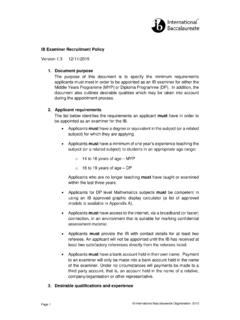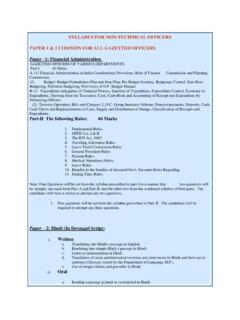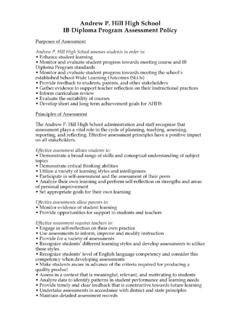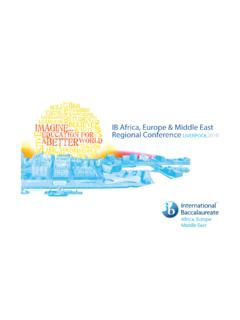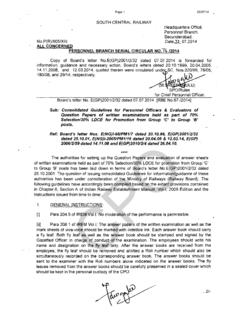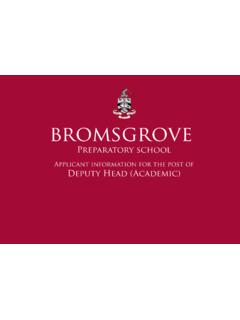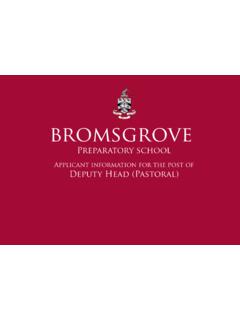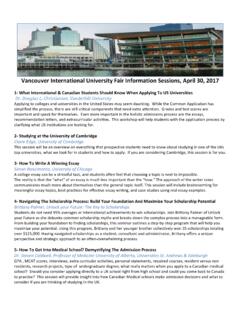Transcription of Bias in Psychological Assessment
1 CHAPTER 4 bias in Psychological AssessmentAn Empirical Review and RecommendationsCECIL R. REYNOLDS AND LISA A. SUZUKIUNDERSTANDING bias INPSYCHOLOGICAL ASSESSMENT82 MINORITY OBJECTIONS TO TESTSAND TESTING83 ORIGINS OF THE TEST bias CONTROVERSY84 EFFECTS AND IMPLICATIONS OF THE TEST BIASCONTROVERSY86 POSSIBLE SOURCES OF BIAS86 WHAT TEST bias IS AND IS NOT87 RELATED QUESTIONS89 EXPLAINING GROUP DIFFERENCES90 cultural TEST bias AS AN EXPLANATION91 HARRINGTON S CONCLUSIONS92 MEAN DIFFERENCES AS TEST BIAS93 RESULTS OF bias RESEARCH95 EXAMINER EXAMINEE RELATIONSHIP104 HELMS AND cultural EQUIVALENCE105 TRANSLATION AND cultural TESTING105 NATURE AND NURTURE106 CONCLUSIONS AND RECOMMENDATIONS107 REFERENCES108 UNDERSTANDING bias INPSYCHOLOGICAL ASSESSMENTFew issues in
2 Psychological Assessment today are aspolarizing among clinicians and laypeople as the use ofstandardized tests with minority examinees. For clients,parents, and clinicians, the central issue is one of long-termconsequences that may occur when mean test results dif-fer from one ethnic group to another Blacks, Hispanics,American Indians, Asian Americans, and so forth. Impor-tant concerns include, among others, that psychiatric clientsmay be overdiagnosed, students disproportionately placedin special classes, and applicants unfairly denied employ-ment or college admission because of purported bias instandardized researchers, polarization also is common.
3 Here,too, observed mean score differences among ethnic groupsare fueling the controversy, but in a different way. Alter-native explanations of these differences seem to give shapeto the conflict. Reynolds (2000a, 2000b) divided the mostcommon explanations into four categories: (1) geneticinfluences; (2) environmental factors involving economic,This chapter is based substantively on a chapter that appears inthe prior edition of this text by Reynolds and Ramsay (2003).social, and educational deprivation; (3) an interactiveeffect of genes and environment; and (4) biased tests thatsystematically underrepresent minorities true aptitudes orabilities. The last two of these explanations have drawnthe most attention.
4 Williams (1970) and Helms (1992) pro-posed a fifth interpretation of differences between Blackand White examinees: The two groups have qualitativelydifferent cognitive structures, which must be measuredusing different methods (Reynolds, 2000b).The problem of cultural bias in mental tests has drawncontroversy since the early 1900s, when Binet s first intel-ligence scale was published and Stern introduced proce-dures for testing intelligence (Binet & Simon, 1916/1973;Stern, 1914). The conflict is in no way limited to cog-nitive ability tests, but the so-called IQ controversy hasattracted most of the public attention. A number of authorshave published works on the subject that quickly becamecontroversial (Gould, 1981; Herrnstein & Murray, 1994;Jensen, 1969).
5 IQ tests have gone to court, provokedlegislation, and taken thrashings from the popular media(Brown, Reynolds, & Whitaker, 1999; Reynolds, 2000a).In New York, the conflict has culminated in laws knownas truth-in-testing legislation, which some clinicians sayinterferes with professional practice. In California, a ban82 bias in Psychological Assessment : An Empirical Review and Recommendations83was placed on the use of IQ tests for identification andplacement of African American statistics,biasrefers to systematic error in the esti-mation of a value. A biased test is one that systematicallyoverestimates or underestimates the value of the variable itis intended to assess.
6 If this bias occurs as a function of anominal cultural variable, such as ethnicity or gender, cul-tural test bias is said to be present. On the Wechsler seriesof intelligence tests, for example, the difference in meanscores for Black and White Americans hovers around 15points. If this figure represents a true difference between thetwo groups, the tests are not biased. If, however, the differ-ence is due to systematic underestimation of the intelligenceof Black Americans or overestimation of the intelligence ofWhite Americans, the tests are said to be culturally researchers have investigated possible bias inintelligence tests, with inconsistent results.
7 The question oftest bias remained chiefly within the purview of scientistsuntil the 1970s. Since then it has become a major socialissue, touching off heated public debate ( , Brooks,1997; Fine, 1975). Many professionals and professionalassociations have taken strong stands on the question. Vande Vijver and Tanzer (2004) presented a taxonomy of threekinds of bias [ , overlap in definitions of the con-struct across cultures, differential appropriateness ofbehaviors associated with the construct in different cul-tures (p. 124), and poor sampling of relevant behaviorsassociated with the construct] bias [ , bias pertaining to the sample ( ,samples are not matched in terms of all relevant aspects,which is nearly impossible to achieve), instrument ( ,differential familiarity with the items), or administration( , ambiguous directions, tester/interviewer/observereffects)] biasdue to poor item translation, ambiguitiesin the original item, low familiarity/appropriateness ofthe item content in certain cultures, or influence ofculture specifics such as nuisance factors or connotationsassociated with the item wording (p.)
8 127).A number of strategies are available to address biasin cross- cultural Assessment (van de Vijver & Tanzer,2004).MINORITY OBJECTIONS TO TESTSAND TESTINGS ince 1968, the Association of Black Psychologists (ABP)has called for a moratorium on the administration ofpsychological and educational tests with minority exami-nees (Samuda, 1975; Williams, Dotson, Dow, & Williams,1980). The ABP brought this call to other professionalassociations in psychology and education. The AmericanPsychological Association (APA) responded by requestingthat its Board of Scientific Affairs establish a committeeto study the use of these tests with disadvantaged stu-dents.
9 (See the committee s report, Cleary, Humphreys,Kendrick, & Wesman, 1975.)The ABP published this policy statement in 1969 (citedin Williams et al., 1980):The Association of Black Psychologists fully supports thoseparents who have chosen to defend their rights by refusingto allow their children and themselves to be subjected toachievement, intelligence, aptitude, and performance tests,which have been and are being used to (a) label Blackpeople as uneducable; (b) place Black children in spe-cial classes and schools; (c) potentiate inferior education;(d) assign Black children to lower educational tracks thanwhites; (e) deny Black students higher educational opportu-nities.
10 And (f) destroy positive intellectual growth and devel-opment of Black children. (pp. 265 266)Subsequently, other professional associations issued policystatements on testing. Williams et al. (1980) and Reynolds,Lowe, and Saenz (1999) cited the National Associationfor the Advancement of Colored People (NAACP), theNational Education Association, the National Associationof Elementary School Principals, and the American Per-sonnel and Guidance Association, among others, as orga-nizations releasing such ABP, perhaps motivated by action and encourage-ment on the part of the NAACP, adopted a more detailedresolution in 1974. The resolution described, in part, thesegoals of the ABP: (a) a halt to the standardized testing ofBlack people until culture-specific tests are made avail-able, (b) a national policy of testing by competent asses-sors of an examinee s own ethnicity at his or her mandate,(c) removal of standardized test results from the records ofBlack students and employees, and (d) a return to regularprograms of Black students inappropriately diagnosed andplaced in special education classes (Williams et al.)

